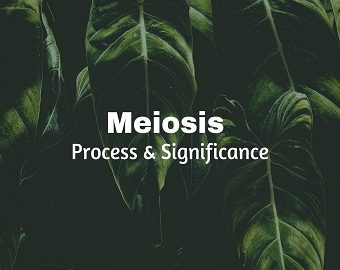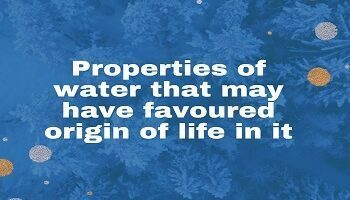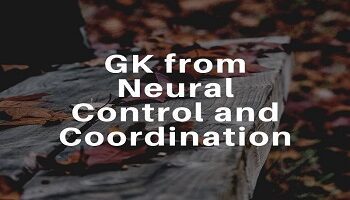Table of Contents
What is Meiosis?
- Meiosis is a reductional division that takes place in the reproductive cells during the formation of gametes or spores.
- Meiosis occurs in the reproductive organs like testes, ovaries in animals, and in the essential parts (stamen and carpel) of flowers.
- Meiosis results in the formation of four daughter cells with half the number of chromosomes as found in the parental cell. This helps in maintaining the stability of species.
Process of Meiosis:
The process of meiosis takes place in two steps namely, Meiosis I and Meiosis II.

Meiosis I:
Meiosis I is completed under Prophase I, Metaphase I, Anaphase I, and Telophase I.
Prophase I:
It is very complex and of a long duration. It is completed under five sub-stages- Leptotene, Zygotene, Pachytene, Diplotene, and Diakinesis.
Leptotene:
- In this stage, the chromosome in the form of a slender thread in diploid number appears in the nucleus. Each chromosome bears a definite number of granules known as chromomeres, and as such the chromosomes look like chains of beads of various sizes.
Zygotene:
- The homologous chromosomes (one paternal and one maternal) start pairing, known as the pairing of chromosomes or synapsis. The chromosome synapsis is accompanied by the formation of a complex structure called the synaptonemal complex. The complex formed by a pair of synapsed homologous chromosomes is called as bivalent or a tetrad.
- The chromosomes become more distinct by their further shortening and coiling.
- Centrioles emit asters and the polarity of the spindle is established.
Pachytene:
- The chromosomes condense further and become very shorter and thicker. They are very distinct now. The two sister chromatids of each homologous chromosome become clearly visible. The bivalent thus becomes a tetrad with four chromatids. In the region of chiasmata, segments of non-sister chromatids of the homologous chromosomes are exchanged and this process is called crossing over.
Diplotene:
- The synaptic forces between the paired homologous come to an end, synaptonemal complex dissolves and the chromosomes start repelling each other.
- Chiasma become more conspicuous and they start slipping towards the end of bivalents. This is called as terminalization of chiasmata.
- The chromosomes undergo further condensation and they appear elongated and engaged in RNA synthesis.
Diakinesis:
- The separated chromosomes after terminalization of chiasmata move towards the nuclear membrane and coincide with the disappearance of the nuclear membrane and nucleolus.
- The chromosomes are fully condensed and get randomly distributed in the cytoplasm.
- The centriole (in animal cells) gets divided into two and astral rays are formed around each centriole to form aster.
- The spindle formation starts.
- Diakinesis represents a transition to metaphase.
Metaphase I:
- The spindle formation is completed.
- The bivalents (homologous pairs) arrange themselves at the equatorial plate in two planes which are parallel to each other.
- The chromosomes are attached to the spindle fibres (microtubules) by their centromere.
- The centromeres of chromosomes face towards the poles and chromatids towards the equator.
Anaphase I:
- The centromere does not divide into two and two chromatids of each chromosome remain joined together by a centromere.
- Each chromosome consisting of two chromatids moves towards the opposite respective poles (parental chromosome number in daughter nuclei is reduced to half) due to longitudinal contraction of spindle fibres.
- Each pole receives the one haploid set of chromosome.
Telophase I:
- Chromosomes undergo decondensation at each pole.
- Nuclear membrane reappears around daughter chromosomes at each pole.
- It is followed by cytokinesis and this is called a dyad of cells and two haploid daughter cells are formed.
The stage between the two meiotic divisions is called interkinesis and is generally short-lived.
Meiosis II:
Meiosis II is completed under Prophase II, Metaphase II, Anaphase II, and Telophase II.
It is similar to ordinary mitosis but in this DNA does not duplicate. It is also called as meiotic mitosis.
Prophase II:
- The sister chromatids become coiled and turn thicker and shorter.
- Each chromosomes consists of two chromatids joined by centromere.
Metaphase II:
- A mitotic spindle is formed.
- The chromosomes arrange themselves at the equatorial plane and are attached with the spindle by their kinetochores of sister chromatids.
Anaphase II:
- The centromere of each chromosome separate.
- The sister chromatids migrate to the opposite poles as daughter chromosomes.
Telophase II:
- Chromosomes begin to uncoil and become thin.
- Nuclear membrane and nucleolus are reformed.
Teleophase II is followed by cytokinesis and it is cleavage type in animal cells and phragmoplast plate formation type in plant cells.
Significance of Meiosis:
- Meiosis helps to maintain the chromosome number constant in each plant and animal species. In meiosis four haploid daughter cells are formed from a single diploid cell. This is very important in sexual reproduction during the formation of gametes.
- Meiosis maintains the stability of species by avoiding the multiplication of chromosomes.
- The phenomenon of crossing over provides a new combination of chromosomes and, hence, a new combination of genes and also of characters in offspring.
- It provides an opportunity for the exchange of genetic materials between the non-homologous chromosomes. So, it brings about variations and through them evolution in the species.
- Meiosis is essentially similar in all sexually reproducing organisms showing that they are related to one another.
- Adaptation of organisms to various environmental stress.









Comments (No)